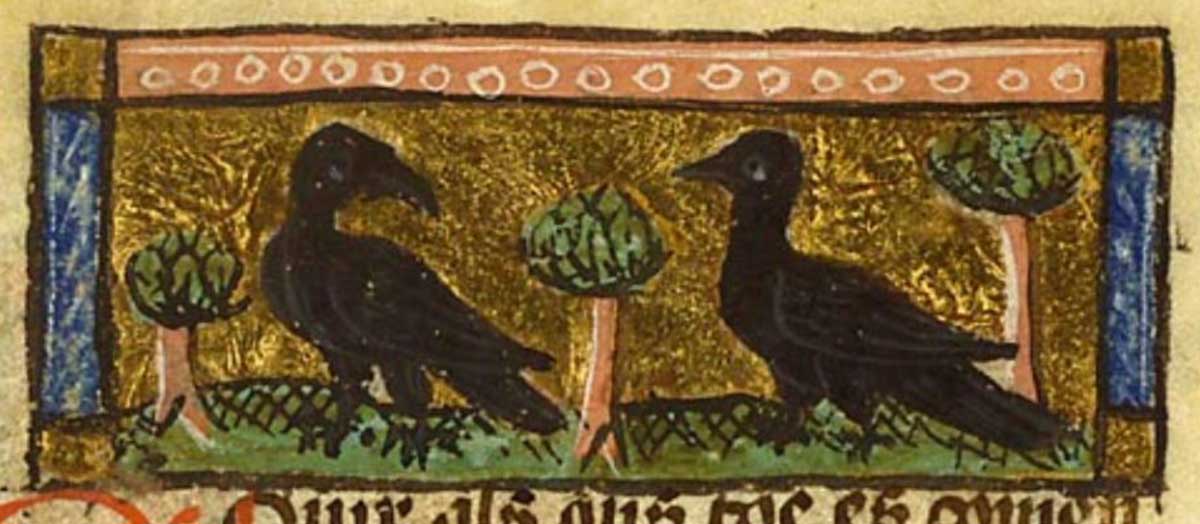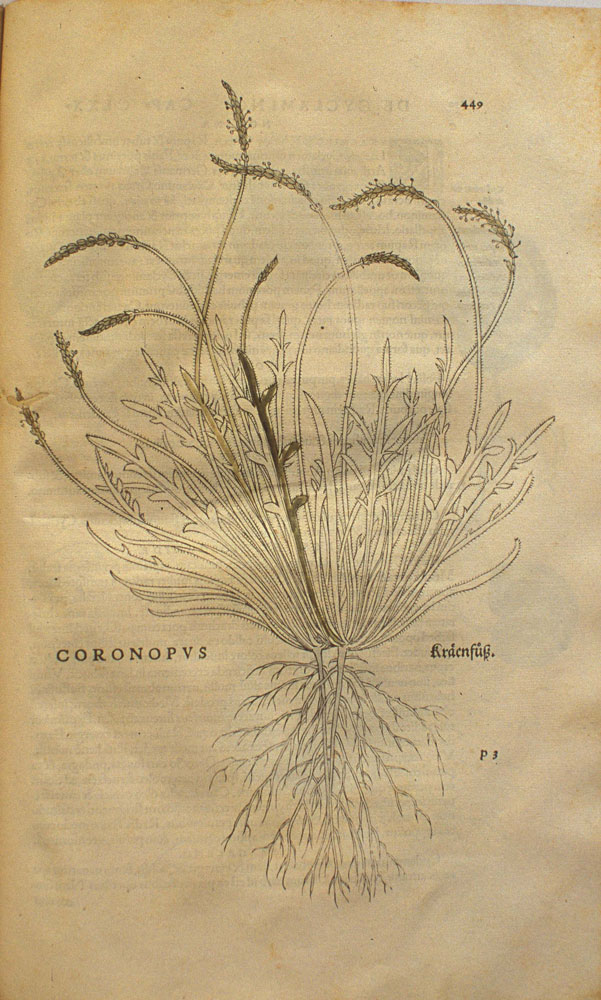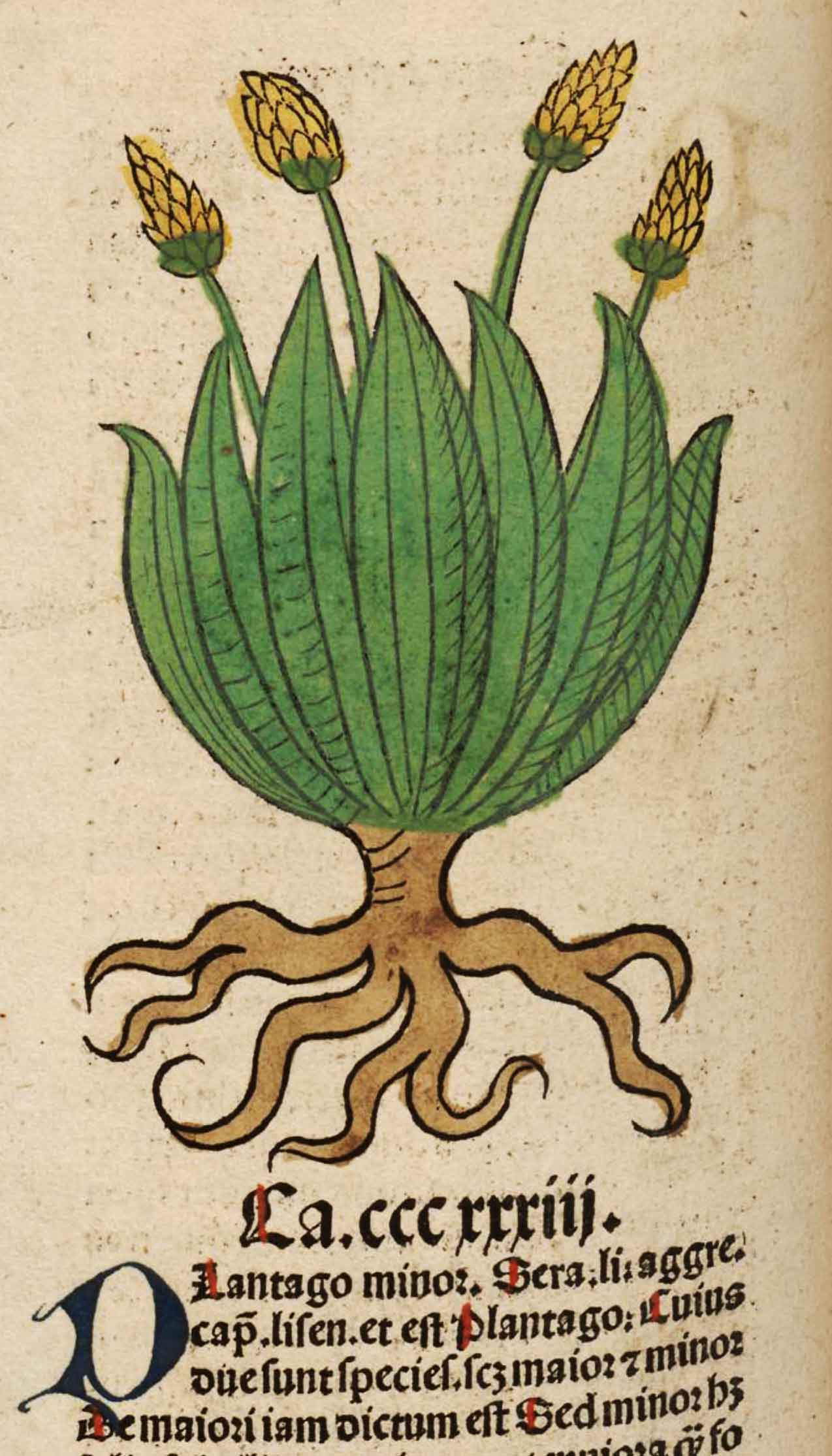coronopus, from the foot of the crow.
Original French: Coronopous, au pied de Corneille.
Modern French: Coronopous, au pied de Corneille.
Among the plants named by similitude.
Notes
Cornix

197. Cornix (crow)
column miniature
Plantago
Plantago coronopous

Coronopus Kraenfuss
Taxon: Plantago coronopous L.
English: buck’s-horn plantain
coronopus
Aculeatarum caules aliquarum per terram serpunt, ut eius quam coronopum vocant. e diverso stat anchusa inficiendo ligno cerisque radicis aptae, stant e mitioribus anthemis et phyllanthes et anemone et aphace. caule foliato est crepis et lotos.
The stems of some prickly plants trail along the ground, those for example of the plant called coronopus. On the other hand anchusa (alkanet), the root of which is used for dyeing wood and wax, stands upright, as do, of the cultivated kinds, anthemis, phyllanthes, anemone and aphace. Crepis and lotus have a foliated stem.
coronopus
De χορωνοπουζ, mot composé de χορωνη, corneille, et πουζ, pied.
Coronopus
Pliny xxi. 16, § 59.
coronopous
De χορωη, corneille, πουζ, pied, allusion à la forme des feuilles. «Aculeatarum caules aliquarum per terram serpunt, ut ejus quam coronopum vocant», Pline, XXI, 59. Fée y veut voir une Crucifére, Cochlearia coronopus, L.; Sainéan, une Légumineuse, Lotus ornithopodioides, L. Mais la plante conservée dans l’herbier de Rauwolff, à Leyde, sous le nom de Coronopus vulgaris est une Plantaginée, notre Plantago coronopus, L. (Paul Delaunay)
pas similitude
Toutes ces plantes, dans De latinis nominibus, sauf pour le delphinium.
Coronopous
De χοφώνη, «corneille», et ποῦζ, «pied» (Pline, XXI, lix).
